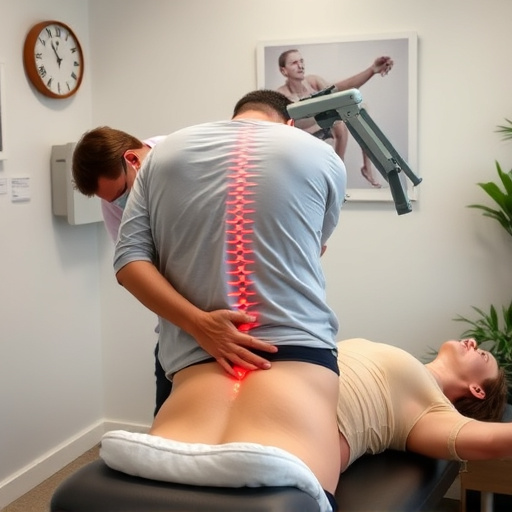Acoustic Wave Therapy (AWT), a non-invasive treatment for sports injuries and chronic pain, is gaining insurance coverage as insurers recognize its efficacy. Key factors influencing coverage include policy terms, clinical evidence, cost-effectiveness, medical necessity, and facility reputation. To navigate AWT coverage, review your insurance plan online, consult healthcare providers and reputable facilities, and stay updated on supporting clinical studies.
“Wondering if Acoustic Wave Therapy (AWT) is within your reach? This innovative treatment has gained traction for its non-invasive approach to various health conditions, but insurance coverage can be a maze. In this article, we unravel the ins and outs of AWT reimbursement. We’ll guide you through understanding this therapy’s potential benefits, exploring factors that influence insurance coverage, and providing practical steps to navigate the process effectively. By the end, you’ll be equipped to make informed decisions regarding your health and financial well-being.”
- Understanding Acoustic Wave Therapy and Its Coverage
- Factors Influencing Health Insurance Reimbursement for Acoustic Wave Therapy
- Navigating the Process: Steps to Determine Coverage and Maximize Benefits
Understanding Acoustic Wave Therapy and Its Coverage

Acoustic Wave Therapy (AWT) is a non-invasive treatment that uses sound waves to stimulate healing and repair in the body. This innovative approach has gained attention for its potential benefits in various medical conditions, including sports injuries, chronic pain, and soft tissue injuries. AWT works by delivering low-intensity acoustic waves that penetrate deep into tissues, promoting cell regeneration, reducing inflammation, and enhancing tissue repair.
When considering coverage under health insurance plans, it’s important to understand that AWT is often categorized as a specialized or alternative therapy. Traditional insurance policies may not initially cover these treatments, but many are starting to recognize their efficacy. Some insurers offer flexible plans that accommodate personalized treatment plans for various conditions, including injury rehabilitation. It’s advisable for patients and healthcare providers to review their specific policy terms and reach out to their insurance carriers for clarification on coverage details related to acoustic wave therapy.
Factors Influencing Health Insurance Reimbursement for Acoustic Wave Therapy

Several factors significantly influence whether health insurance plans cover acoustic wave therapy treatments. One key factor is the specific policy and coverage terms set by each insurance provider. Some insurers may include acoustic wave therapy as part of their wellness care or alternative treatment benefits, recognizing its growing role in complementary healthcare. Others might exclude it entirely from reimbursement, citing a lack of substantial clinical evidence or cost-effectiveness data.
Another influential aspect is the diagnosis and medical necessity for acoustic wave therapy. Insurance companies often require detailed documentation from healthcare professionals to substantiate the patient’s condition and how acoustic wave therapy is a medically necessary component of their treatment plan. Additionally, the reputation and credibility of the facility providing the therapy can play a role. Facilities with established track records in functional rehabilitation or chiropractic care may find it easier to secure reimbursement for acoustic wave therapy services.
Navigating the Process: Steps to Determine Coverage and Maximize Benefits

Navigating the process of determining acoustic wave therapy coverage can seem daunting, but with a few strategic steps, patients can maximize their benefits. First, review your specific health insurance plan details. Many plans provide comprehensive information online about covered services, including alternative treatments like acoustic wave therapy. Check if your policy includes out-of-pocket expenses for such procedures and understand the reimbursement process.
Next, consult with your healthcare provider who can offer insights into similar patient cases and potential outcomes. They might even recommend specific facilities known to work effectively with insurance claims for acoustic wave therapy, focusing on its growing popularity in treating conditions like back pain relief and headache relief. Additionally, stay updated on clinical studies and research supporting shockwave therapy, as evidence-based practices often enhance insurance coverage approval chances.
Acoustic wave therapy (AWT) has emerged as a promising treatment option, but understanding its insurance coverage is essential for patients. While the reimbursement policies vary across plans and regions, factors like clinical evidence, treatment complexity, and provider network involvement play significant roles. By navigating through these considerations and following structured steps to determine coverage, individuals seeking AWT can maximize their benefits and access this innovative therapy with greater ease.














